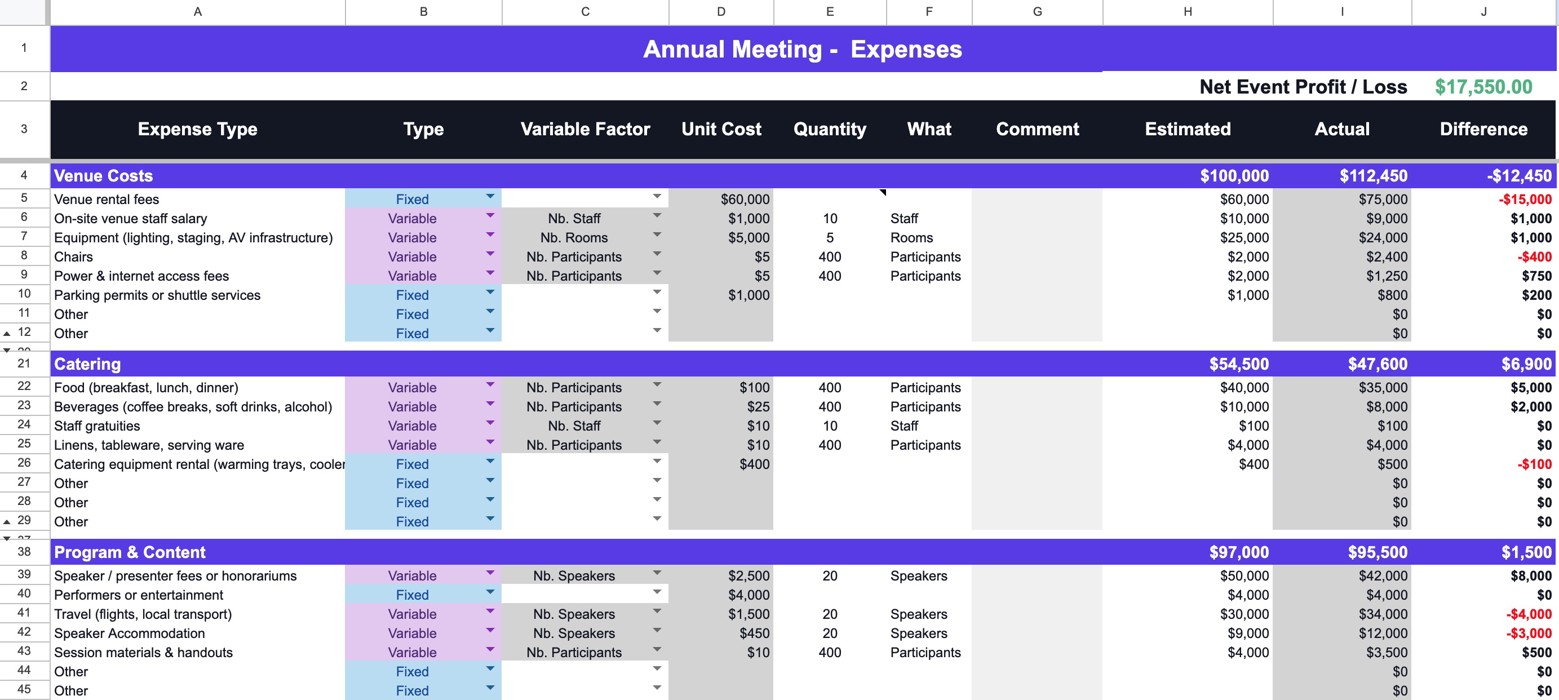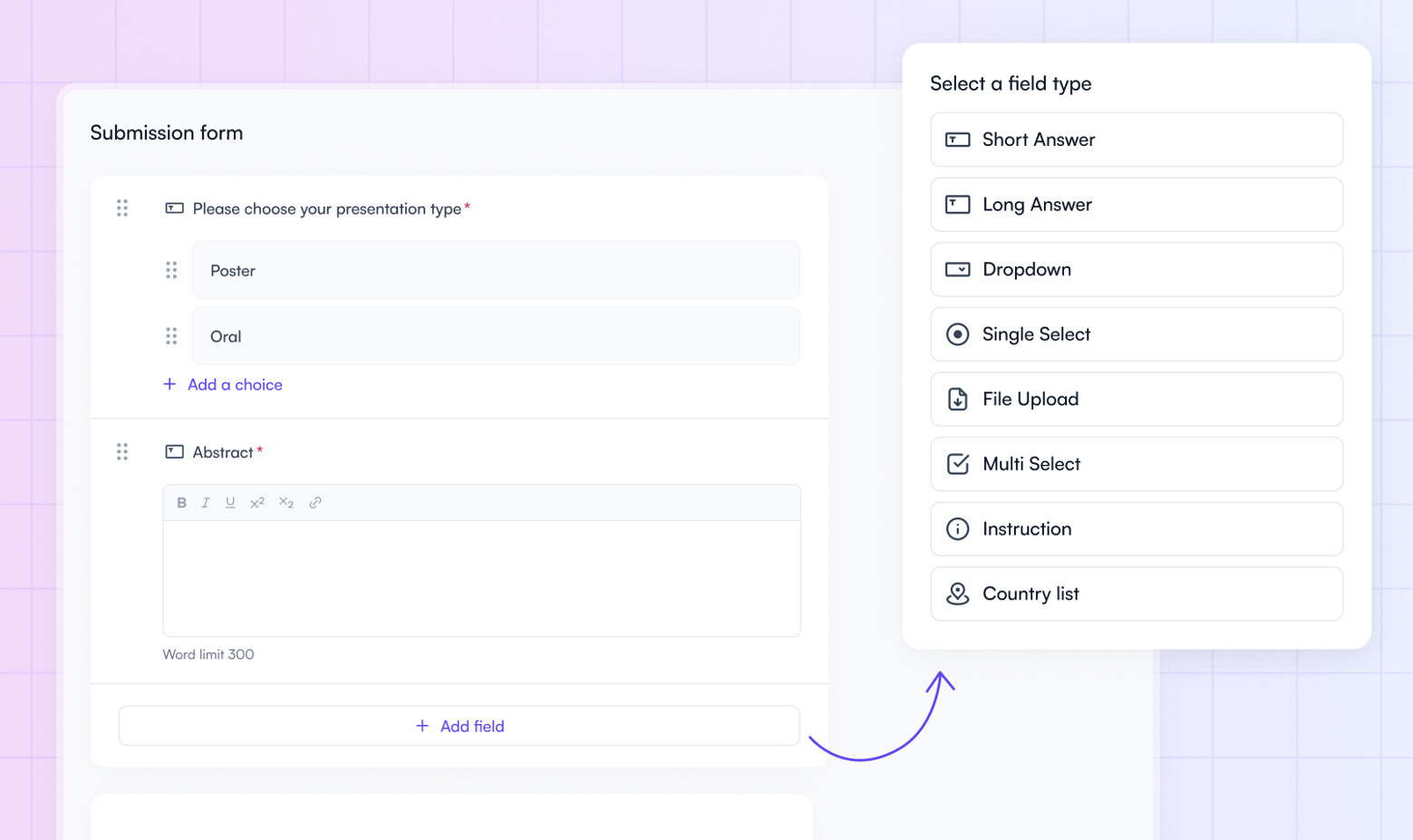Academic Event Planning: A Complete Framework for Researchers
Have you got questions regarding how to organize an academic conference? This guide walks through the full academic event planning process, providing practical steps that can help you move from initial concept to a well-run, successful event.
Planning an academic event is rarely a straightforward task. Between aligning with institutional priorities, coordinating multiple stakeholders, and managing tight timelines, it’s a process that demands both strategy and adaptability.
Whether you’re organizing a small graduate symposium or an international conference, the same principles apply to all academic event planning: clarity of purpose, careful preparation, and effective execution.
Planning an Academic Event: Step-by-Step Framework

Even the most seasoned event planners know that academic environments have their own set of challenges: overlapping calendars, decentralized decision-making, and unique funding structures.
A clear framework keeps the process manageable and ensures that every decision supports the event’s ultimate goal. The following steps outline a proven approach to planning academic events, from defining the purpose to selecting the date.
Step 1: Build Your Planning Committee
Academic event committees regularly span departments and rely on collaboration and goodwill. The most effective committees assign clear roles while recognizing that availability and seniority can influence responsibilities.
Common roles in a conference organizing committee include a logistics lead, program chair, speaker coordinator, volunteer manager, and communications officer. In practice, these responsibilities often overlap, requiring flexibility and regular check-ins. A shared responsibility matrix or simple role tracker can help keep everyone aligned as the planning process unfolds.
Step 2: Identify the Purpose and Align with Institutional Goals
Every successful academic event begins with clarity of purpose. Whether the aim is to share research findings, meet accreditation requirements, provide professional development, or encourage internal knowledge exchange, the rationale and target audience must be explicit from the start.
Strong alignment with institutional priorities gives the event weight and relevance. This might mean linking a symposium to a department’s triannual research showcase, framing a lecture series within a multidisciplinary strategy, or fulfilling the outreach component of a government-funded research grant.
Once the purpose is defined, the format becomes easier to determine, from academic conferences and symposia to panel discussions and poster sessions. When participants see a direct connection to broader goals, engagement tends to follow.
Step 3: Get Buy-in from Faculty and Departments
In academic event planning, support from faculty and departments is often the deciding factor in whether the event succeeds. Departments operate with their own schedules, priorities, and levels of enthusiasm, so early outreach is critical.
Engaging department chairs, deans, and respected faculty members early helps secure participation and avoids scheduling conflicts. Faculty members, often working under tight deadlines, respond best to clear, specific requests.
Defining expectations from the outset (whether they’re speaking, moderating, or promoting the event) ensures commitment and reduces the risk of last-minute changes.
Step 4: Set Your Budget and Explore Funding Options

A carefully planned budget helps ensure the success of the event.
The budget determines the scale and scope of your academic event planning. A modest $10,000 departmental colloquium might cover catering, modest honorariums, and printed programs. A $150,000 international symposium, on the other hand, could involve travel expenses, interpretation services, professional AV production, and large-scale catering.
Funding can come from a mix of sources, such as internal department budgets, research grants, advancement offices, alumni donors, or corporate conference sponsorships.
Academic budgeting cycles can influence when funds are available, so timing your requests is crucial. Cost-saving measures, such as using campus venues, leveraging in-house printing, or engaging student volunteers, can extend the impact of limited resources.
Check out our Conference Budget Template.
Step 5: Pick a Date Carefully
Selecting a date in an academic environment means coordinating multiple calendars. Avoiding exam periods, reading breaks, national conferences, and major holidays is essential. It’s also wise to check faculty and department schedules to prevent competition with on campus events.
Engaging with the registrar’s office or departmental schedulers early can prevent last-minute conflicts and ensure the event gets the attention it deserves.
The date can be influenced by the venue availability (next step).
Step 6: Choose the Right Format and Venue
The type of event (in-person, hybrid, or virtual) affects accessibility, engagement, and cost. An in-person event may foster stronger networking, but hybrid or virtual formats can expand the audience and lower travel costs.
Securing a venue in an academic setting can be competitive. Classrooms, auditoriums, and specialized labs may be controlled by the registrar or a central events office, and space must be booked well in advance to avoid conflicts with teaching schedules. Accessibility should be part of the initial selection process, from wheelchair access to compliance with local accessibility legislation.
Step 7: Prepare and Launch the Call for Abstracts

Fourwaves helps you manage submissions from start to finish through an intuitive interface.
At the heart of many academic event lies the Call for Abstracts (CFA). This stage invites attendees to contribute their work, shaping the intellectual core of your conference. It helps clarify the event’s scope and serves as a statement of purpose for your academic gathering.
7.1 Select an Abstract Management Platform
Choose software purpose-built for academic workflows, one that centralizes submissions, peer review, and connects straight into your conference website and registration system. Tools tailored to research settings can streamline everything from custom submission forms to reviewer assignment and program creation.
7.2 Decide on Your Review Model
Will abstracts go through single-blind or double-blind peer-review, or a more informal selection? Clarity here fosters trust, both with authors and reviewers, and helps define the tone and reliability of your program.
7.3 Decide and Communicate Key Dates
Anchor your process with clear milestones: when submissions open, when reviews happen, when decisions go out, and when final materials are due. A robust timeline, clearly communicated, helps authors plan and avoids last-minute chaos.
7.4 Prepare the Submission Form
Only collect the information you truly need, such as title, authors, abstract and presentation format (oral, poster). You can ask for the track or topic to help you plan your program. Asking for the presenter's experience (undergraduate, Master or PhD level) can help build a balanced program.
7.5 Promote your CFA Strategically
Launch your CFA across multiple channels, department newsletters, academic listservs, professional networks, and your event website (even a simple landing page works). Make it scannable and compelling, so readers clearly understand the “what,” “why,” and “how”. Take a look at our call for papers template.
Further Reading
Here are some aditional resources to help for abstract management:
Step 8: Manage Registration and Check-in Logistics
The registration process sets the tone for the attendee experience. A basic Google Form may be enough for small, informal gatherings, but larger academic events often benefit from professional event management software such as Fourwaves, which streamlines event registration, payment processing, and data collection.
On the day, check-in should be quick and intuitive, whether that’s badge pickup, QR code scanning, or same-day registration for walk-ins. Planning for accessibility is essential: larger print name tags, options for personal assistance, and clear desk layouts can make a significant difference for attendees with specific needs. Always ensure that collected data is handled in compliance with institutional privacy rules and relevant regulations (think: GDPR, the General Data Protection Regulation, or FERPA, the Family Educational Rights and Privacy Act).
Step 9: Promote the Event Strategically
Academic event planning doesn’t end once the program is set; it also requires a targeted promotion strategy. Internally, use department newsletters, mailing lists, internal communication tools, social media and faculty meetings to ensure colleagues are aware and engaged.
Externally, use academic listservs, partner institutions, LinkedIn, and relevant professional associations to reach a wider audience. Don’t overlook physical promotion: posters in faculty lounges, libraries, and staff offices can still drive interest. Consistent messaging across channels builds momentum and helps you reach the right mix of faculty members, students, and stakeholders.
Check out our article on 9 proven ways to promote a conference.
Step 10: Set Up AV and Signage
For hybrid or virtual formats, audiovisual planning is critical. Microphones, streaming capabilities, interpretation services, and live captioning all contribute to accessibility and engagement. Determining early on whether internal event coordinators can handle the setup or if you need external providers avoids last-minute surprises.
Equally important is wayfinding. Clear directional signage, labelled rooms, and marked accessible routes reduce confusion and help participants arrive on time. A full technical run-through before the event day ensures that both technology and signage work as intended.
If you have an event website, make sure to include arrival information and a floor map clearly. Certain conference management solutions allow you to email participants directly which is useful to help them plan their arrival and hwo to prepare.
Step 11: Monitor the Event Day
The event day requires both agility and resourcefulness. A run-of-show document that maps out speaker arrivals, session transitions, and volunteer shifts keeps everyone on-site aligned. Unexpected challenges, from a speaker cancelling to equipment failure, are easier to manage when there’s a designated point person for each functional area, including tech, registration, logistics, and catering.
Checking in regularly with these leads allows you to respond quickly without disrupting the flow of the event.
Step 12: Post-event Wrap-up
Closing the event effectively helps sustain its impact. Follow up with personalized thank-you messages to speakers, faculty leads, and volunteers reinforces relationships. Sharing highlights such as attendance numbers, notable quotes, and event photos via newsletters or research blogs extends the event’s visibility.
Collecting attendee feedback through surveys, with questions tailored to content, logistics, and format, provides valuable insights for future events.
For academic conferences, writing conference proceedings, publishing conference proceedings, and archiving all materials ensures that the event contributes to institutional knowledge and serves as a reference for the next planning committee.
Finally, reviewing event metrics, including registration numbers, attendance rates, and session engagement, helps you measure the event’s impact. These results can guide improvements for future academic events and strengthen your case for continued funding or institutional support.
Fourwaves provides this handy conference planning timeline to help you throughout your academic event planning.
Academic Event Planning Realities: What No One Tells You
The theory of academic event planning often looks tidy: choose a date, book a room, send invitations. The reality is far more unpredictable. While generic event guides cover budgets, catering, and promotion, they rarely account for the unique friction points that come with working in an academic setting.
Approvals can crawl through multiple administrative layers, sometimes taking weeks for a single sign-off. In the meantime, key details sit in limbo, making it hard to confirm speakers or book vendors. Faculty participation, even when enthusiastic at the start, can shift unexpectedly. A professor might withdraw weeks before the event because a long-awaited grant came through or a sabbatical was approved.
Student assistants, a backbone for many academic events, bring energy and fresh ideas, but their availability to help with event logistics isn’t always guaranteed. A graduation date or a last-minute internship can leave you short-handed just when you need extra support.
Then there’s the challenge of scheduling. Course timetables, external conferences, and even labour strikes can all derail carefully laid plans. Add to that the absence of a central coordination hub in many universities, and it’s not uncommon for separate units to unintentionally compete for the same audience or venue.
These realities don’t make academic events impossible, but they do mean that adaptability, contingency planning, and patience are as essential as your run-of-show.
Choosing the Right Academic Event Software
For many academic event planners, the process is a juggling act. Registration details live in an Excel file. Poster submissions sit in a shared Dropbox folder. Calendar invites go out through Outlook, and scheduling requires another tool entirely, often a Doodle poll. Each system works in isolation, but moving between them adds friction, increases the risk of errors, and makes it harder to keep everyone on the same page.
Purpose-built academic event management software removes these obstacles by bringing every stage of the event into a single platform. Registration, abstract submissions, poster sessions, scheduling, and check-in can be managed from one place, reducing duplication and giving the planning team a clear, real-time view of progress.
Replace your fragmented event platform with one that works seamlessly.
Academic Event Planning FAQs
Begin outreach at least a year before the event, especially for large academic conferences or symposia. Faculty schedules fill quickly, and early recruitment gives them time to prepare and helps secure commitments before other priorities take over.
Divide responsibilities into clear streams: an academic/program committee for abstract review and session planning, and an operations/logistics committee for venue, AV, registration, and volunteer coordination. Use shared documents or project management tools to track tasks and deadlines.
Contact local hotels six to eight months in advance. Many offer discounted rates if you can guarantee a minimum number of bookings. Provide speakers with a list of nearby accommodations, including those within walking distance of the venue.
Match the setup to the format: panel discussions work best in theater-style seating, workshops in classroom layouts, and poster sessions in open spaces with good flow. For A/V, consider microphones for panelists, projectors for presentations, and live-streaming capability for hybrid or virtual participation.
Prioritize essential items and seek in-kind contributions where possible. Campus catering can be more affordable than external vendors, and travel stipends can be capped or limited to invited speakers. Sponsorships from relevant organizations can help offset large expenses.
Free registration can increase attendance but may reduce commitment levels. If you charge fees, offer tiered pricing that reflects attendee categories. For example, set lower rates for students or independent scholars, and standard rates for faculty or industry professionals.


